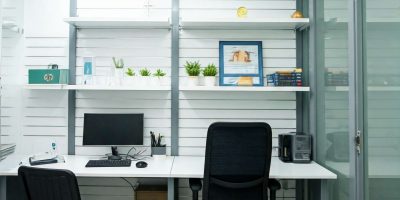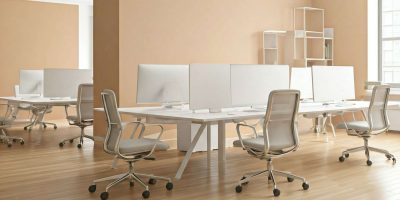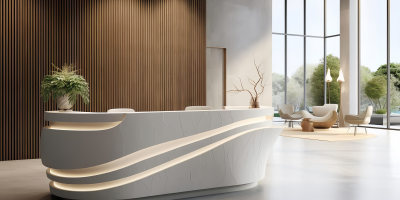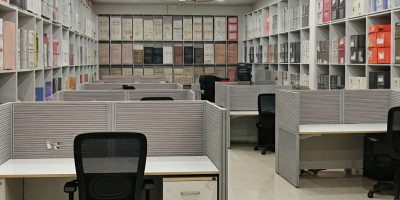Office Furniture
Office Furniture

Workstations and Desks: Workstations and desks form the core of any office setup, providing employees with personal or shared spaces for work.
Types:
- Individual Desks: Designed for personal use, often with drawers for storage.
- Shared Desks: Long desks that accommodate multiple employees.
- Height-Adjustable Desks: Allow users to alternate between sitting and standing positions, promoting ergonomic health.
- Executive Desks: Larger, more luxurious desks for senior management, often with premium finishes.
- Collaborative Workstations: Open-design desks that encourage teamwork.
Features:
- Cable management systems for a tidy workspace.
- Built-in storage for supplies.
- Customizable designs to fit office layouts.

Chairs: Office chairs are crucial for comfort and posture support, influencing employee productivity and health.
Types:
- Ergonomic Chairs: Adjustable height, lumbar support, and armrests for maximum comfort.
- Executive Chairs: High-back, cushioned chairs for senior staff, often with leather finishes.
- Task Chairs: Standard office chairs suitable for general use.
- Visitor Chairs: Simple, comfortable seating for guests or clients.
- Lounge Chairs: Relaxed seating options for breakout areas.
Features:
- Adjustable components for ergonomic support.
- Swivel bases and wheels for mobility.
- Durable and breathable materials.

Storage Solutions: Efficient storage keeps the office organized and maximizes space usage.
Types:
- Filing Cabinets: Vertical or lateral units for document storage.
- Pedestals: Small, mobile units often placed under desks.
- Lockers: Secure storage for personal belongings.
- Shelving Units: Open shelves for books, decorative items, or files.
- Storage Closets: Larger cabinets for office supplies or equipment.
Features:
- Lockable units for security.
- Modular designs for customization.
- Durable materials like steel or wood.

Meeting and Conference Room Furniture: These pieces are designed for collaborative spaces where team discussions, client meetings, and presentations take place.
Types:
- Conference Tables: Large tables with integrated cable management for tech needs.
- Meeting Room Chairs: Comfortable seating for long discussions.
- Podium or Lecterns: For presentations and speeches.
Features:
- Durable and stylish finishes.
- Expandable tables for flexibility.
- Built-in power outlets for devices.

Reception area Furniture: The reception area is the first impression of your office and requires stylish and comfortable furniture.
Types:
- Reception Desks: Designed for receptionists, often with storage and signage space.
- Visitor Seating: Comfortable chairs or sofas for guests.
- Coffee Tables: Functional and aesthetic additions for magazines or decorations.
Features:
- Eye-catching designs to reflect the company’s branding.
- Durable materials for high-traffic areas.
- Ergonomic seating for visitor comfort.

Modular Furniture: Modular furniture offers flexibility and adaptability, making it ideal for dynamic office environments.
Types:
- Modular Workstations: Adjustable desk systems.
- Partition Systems: Movable walls for creating temporary office spaces.
- Convertible Furniture: Items that can serve multiple purposes, like foldable desks.
Features:
- Scalable and reconfigurable designs.
- Easy assembly and disassembly.
- Space-saving solutions for growing businesses.

Cafeteria Furniture: Furniture designed for dining and break areas in offices.
Types:
- Dining Tables: Long or small tables for meals.
- Chairs and Stools: Comfortable seating with easy-to-clean surfaces.
- Bar-Style Seating: For modern dining areas.
Features:
- Easy-to-maintain materials like metal or laminate.
- Compact designs for space efficiency.
- Durable finishes for heavy usage.

